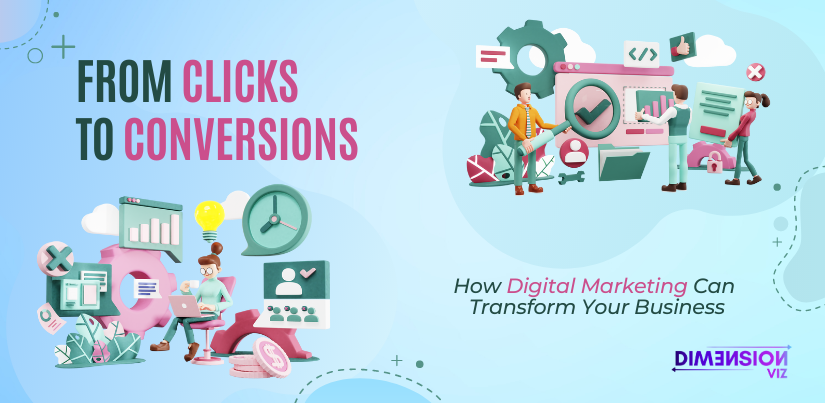Big Data Allows For Greater Flexibility
As marketers appreciate the value of usability at scale, having more data is only half the battle. Keeping the customer first should always be a priority. This proverbial aphorism has been repeated ad nauseam numerous times. It is, nonetheless, just as necessary today as it was in the past.
At an unprecedented rate, consumers are transitioning to digital-first lifestyles. Brands realized that to reach these people, they needed to demonstrate that they cared. Customers deserved personalized experiences based on their preferences. They deserved to be treated as individuals.
The solution appeared to be straightforward. More information is needed. The greater the size, the better. While Big Data’s potential and scalability in terms of consumer communication were obvious, it also brought with it previously unknown challenges like accessibility and actionability.
How would a brand organize and track touchpoints across solutions to produce meaningful insights and generate tangible income with all of this new data? The power was there, but how to use it was still a mystery.
The Problem With Big Data
Our ability to be agile has undoubtedly improved as we transition to a digital-first culture. But we have also bred complexity in the process. The list goes on and on multiple project management software, an email provider, a landing page host, a direct mail solution, etc.
Today’s marketing teams use a plethora of tools to make their jobs easier. However, as more solutions are accepted, the tech web gets more challenging to navigate. The data is at our fingertips, but it comes at the sacrifice of cleanliness and good system orchestration.
As many CTOs will tell you, the difficulty for many is having too many apps. However, devices like your smartphone and laptop would be nearly impossible to use if that were the case.
The actual issue is the lack of integration between the marketing platforms that companies use. It’s difficult enough to personalize communications and marketing outreach across a consumer’s conversion path. When tools, solutions, and data aren’t talking to one another, the problem becomes exponentially worse. Instead of losing weight, the goal should be to establish a single, integrated, dynamic, and accessible view of consumer data.
Customer Data Platforms (CDPs), which strive to unite customer and prospect data in one ecosystem, have emerged as a result of this drive for better and more actionable insights.
It creates a single “data vault” to make reaching out to customers more straightforward, but it doesn’t solve all problems. The next step is to put this information to use making it simple and effective. To use it to make more informed business decisions and to create more personalized marketing efforts.
The Flow Of Big Data Should Be Encouraged
Data aggregation is a significant step. Many marketers come to a halt here because it is so large. This, however, is only half of the struggle. The data is effectively a black box at this point, with only a few people seeing or understanding it. It’s critical to make data accessible and actionable everywhere to fully realize its potential. Unlocking this data not only simplifies the process of sharing, collaborating, and acting on insights but also de-mystifies it. This teaches marketers how to ask the appropriate questions while determining how to improve their results.
To accomplish this, it’s critical to collaborate with a partner who understands how to deal with the existing systems. All of the benefits and, effectively, the aim of a CDP are lost if the CDP is unable to recognize existing solutions in use. The CDP’s goal is to scale and improve on what internal teams are already doing while giving them a consistent view of all consumer data.
How To Make Your Data More Valuable
We’ve gone through some of the concerns that Big Data can cause, as well as why it’s still vital. With that in mind, here are a few ways marketers may get the most out of their data by utilizing current marketing tools and methods.
1. Ensure that low-code or no-code functionality is available.
One of the most difficult elements of data management is the management of data. Creating charts, exporting and importing data, and pulling specific accounts. It can be intimidating. Work with software that allows marketers to easily drag, drop, and autofill many of these aspects, allowing them to go deeper into the data.
2. When you combine first-party data with purpose, you have a powerful combination.
Target audiences can be effectively engaged and converted using both first-party and third-party data. However, it would be a mistake to prioritize one data collection over the other. First-party data is a fantastic method to learn more about the products or services that visitors to your site are most interested in, but it doesn’t go much further. Combine your first-party and third-party data to gain a deeper understanding of your customers’ overall online habits, actions, and interests.
3. Invest in identity resolution methods that do not rely on cookies.
Cookie deprecation isn’t quite here yet, but it’s a foregone conclusion following Apple and Google’s pronouncements last year. As a result, marketers must build a comprehensive approach to identifying and engaging with customers across all marketing channels and the sales funnel. The most effective method to achieve this is to supplement your first-party data with rich, third-party data that shows you how consumer opinions are changing in real time.
Don’t make a distinction between what you’ve learned and what you’ve done.
To put it another way, don’t overcomplicate things. CDPs are fantastic at connecting data, but the next step is getting it into the hands of the people who will use it. For people who work with data regularly, analytics tools are invaluable. The real power comes from making the data collected by the CDP available to all users in a network via the apps and tools they use most frequently.
Conclusion
For marketing teams, data can and should be a wonderful democratizer. Marketers frequently believe that data is inaccessible or ambiguous. As the shift to digital accelerates, so does the demand for a change within marketing departments. Marketing technology and insights solutions can help “lift the veil” on what the data is telling. With this level of accessibility, marketers can acquire insights in a timely and impartial manner, allowing them to pivot and optimize more effectively than ever before.







